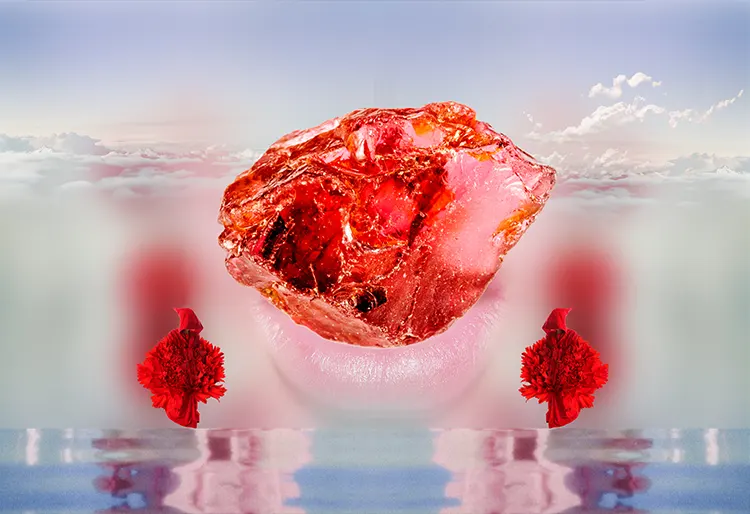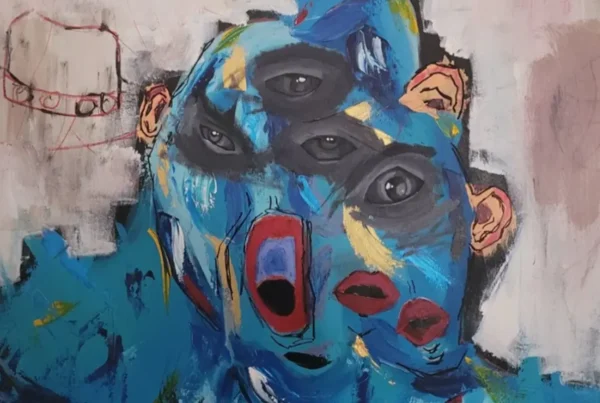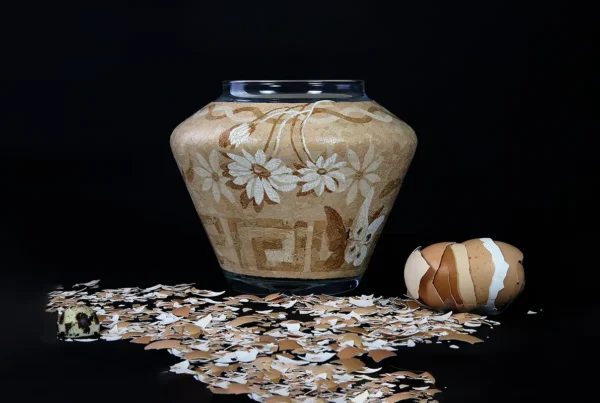“My art has to do with dissolving the basic dichotomy between the sensual and sacred, flesh and spirit.”
Ulla Karttunen: A Pioneering Vision in Contemporary Art
Ulla Karttunen stands as a unique figure in the realm of contemporary art, celebrated for her transformative and subversive approaches. With a career spanning decades, she skillfully creates digital paintings and constructs sculptures using unconventional materials like toilet paper. Her work boldly redefines traditional art boundaries, blending art with reality in new ways. Living in Finland, Karttunen also keeps homes in Turku, Joensuu, and Paris, and enjoys residing in various places, such as southern Italy this autumn. Her art has gained widespread recognition, and is displayed in major art hubs in Europe and America, such as Rome, New York, London, Berlin, Florence, Miami, Rio de Janeiro, and Los Angeles.
Her oeuvre seamlessly integrates diverse materials, epitomizing a critique of power dynamics in both art and society. Karttunen’s “horrifyingly beautiful” digital paintings traverse themes of ethics, gender, and censorship. With a foundation in art theory, she has penned approximately 200 articles and delivered lectures at international conferences. The artist’s significant contributions have garnered accolades, such as a 5-year artist’s grant in 2015, an international art prize in 2016, and a State artist pension in 2020.
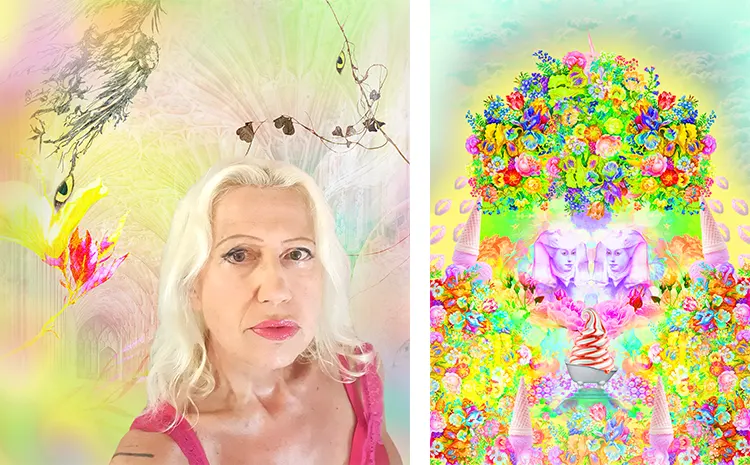
Philosophy and Paradox: The Artistic Journey of Ulla Karttunen
Described as everything from “seductive and enchanting” to “timeless and philosophical visual poetry,” Karttunen’s art is a melange of contrasting descriptors. It is skillful, impressive, and paradoxically both frightening and meditative. The artist’s works adeptly dissolve the dichotomy between the sacred and sensual, embedding philosophical inquiries into tangible forms. Karttunen identifies herself as an esoteric contemporary artist, unbound by any specific doctrine or religion.
The compelling journey into the world of art for Ulla was fueled by her incessant pondering over existence. Her initial ventures included collaborative projects and the establishment of an alternative gallery in Paris. The artist’s transformation from a conceptual thinker to a physically engaged creator was prompted by her mystic experiences. Guided by philosophical meditations, love, sensuality, and the poetics of existence, she turned to art when faced with an overwhelming reality.
In addition to her remarkable artistic creations, Ulla Karttunen is also recognized as a philosopher-artist and a keen cultural critic. Her work transcends mere visual appeal, embedding deep philosophical and critical insights. Karttunen’s art serves as a medium through which she examines and critiques societal norms and cultural practices. Her background in philosophy and her acute observation of social dynamics inform her artistic practice, adding layers of meaning to her creations. As a cultural critic, Karttunen’s art often reflects her commentary on contemporary issues, making her work not just a visual feast but also a source of intellectual engagement. This aspect of her work underscores her role as a thoughtful commentator on society, using her art to provoke dialogue and challenge conventional perspectives.
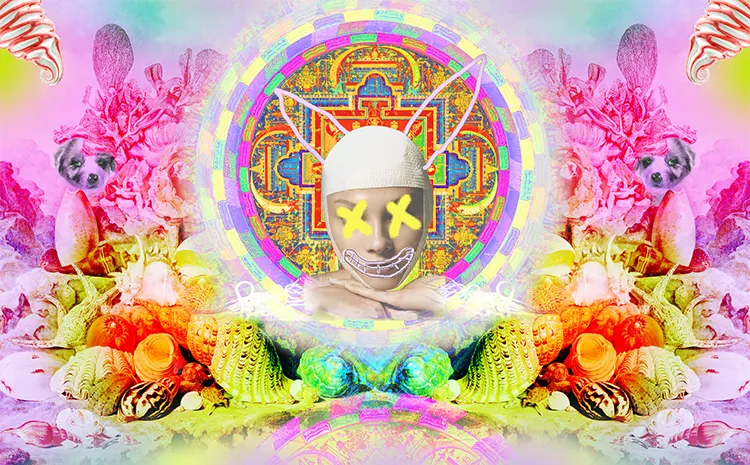
“Donna Criminale”: A Poignant Reflection on Marginalization
“Donna Criminale,” a significant work by Ulla Karttunen, is an ephemeral sculpture crafted from what is commonly seen as the most banal and worthless material: toilet paper. This sculpture, resembling a hanged goddess, serves as a patron saint for the marginalized, representing those deemed low or trivial in society. The work delves into themes of social inequality and censorship in a market-based society. Karttunen draws inspiration from sociologist Zygmunt Bauman’s observation that contemporary consumer society often perceives the poor as criminals, due to their limited participation in consumerism. The artist further explores this notion by considering the degrading treatment of ‘low’ workers dressed in white, from nurses to cleaning women. These female-dominated occupations are undervalued by the social order and value hierarchies of the patriarchal society.
The title “Donna Criminale” is a nod to criminologist Cesare Lombroso’s theory that some people are born criminals. This idea, which resonated horrifically with the Third Reich’s policies, reflects a belief in the inherent superiority or inferiority of certain groups. Karttunen’s work also references a real-life art censorship case in Finland, where the handling of feminist issues before the MeToo movement, or the color of an artist’s clothes, rendered the artist not only inferior and more worthless than toilet paper but also a fraud. “Only born criminals and underpaid women wear white, artists – as we know well – always wear black,” says Karttunen, referring to the fact that defining art is always related to power, politics, and human rights.
The sculpture, characterized by its simultaneous minimalist and baroque style, and its poor yet glamorous appearance, invites a range of interpretations. It has been exhibited in diverse settings, from an industrial art center to a white-walled gallery, a Portuguese church, and even in the National Museum of Algeria, beside a princess’s throne. “Donna Criminale” resonates with viewers on various levels, allowing them to appreciate the sublime revealed amidst the commonplace, without necessitating an understanding of its theoretical framework.

Ulla Karttunen: Blending Styles to Challenge the Status Quo
Ulla Karttunen’s artistry is a distinctive fusion of pop, baroque, avant-garde, and dark mysticism, all underpinned by a commitment to social justice. Through her work, Karttunen critiques patriarchal values and the tenets of contemporary capitalism. Her pieces explore themes such as social inequality, gender, power, and self-determination, utilizing banal, anti-grandiose materials like toilet paper and cleaning rags as a form of societal commentary.
Ulla Karttunen’s artistic practice is defined by her explorative and innovative use of mediums. Rejecting traditional notions of purity in art forms, she embraces a fusion of the unorthodox and impure to mirror the intricacies of reality. Digital images and installations are her primary vehicles of expression, where she skillfully combines manual techniques with digital methods. This blend results in works of profound depth and texture, often integrating unexpected materials like ketchup and nail polish to challenge conventional artistic norms. Beyond purely visual art, Karttunen is also immersed in the worlds of tactile and olfactory experiences, including sculpture and fragrance art, exploring often underrated human senses.
Drawing from diverse fields such as philosophy, literature, theology, and social theory, the artist finds inspiration in the works of thinkers like Bataille, Blanchot, Derrida, Deleuze, Levinas, and Nietzsche, as well as artists like Caravaggio and Duchamp. Intriguingly, Karttunen has produced artworks that seemingly pre-empt the existence of certain pieces, thereby challenging traditional perspectives on visibility, power, and history.
For Ulla Karttunen, silence is a paramount aspect of her creative workspace, leading her to prefer exhibiting her pieces in serene chapels. In the summer of 2023, she displayed two large altar paintings in baroque churches in Portugal. This autumn, Karttunen is seeking sacred silence in chapels in southern Italy.
